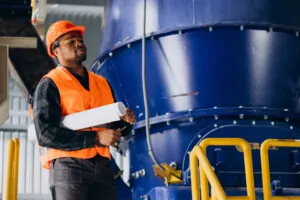Building projects need strong structures. They ensure that buildings and facilities are safe and stable. They also make them last a long time. Keeping strength in structures is vital for all kinds of buildings. This includes skyscrapers and bridges. It prevents disasters and keeps people inside and on the street safe. Methods for inspecting structures are vital. They show how structures are doing, find problems, and decide what repairs or care are needed. In this in-depth guide, we’ll talk about the different structural check methods. We’ll also cover how important they are for evaluating buildings.
Many methods inspect structures. They check the health and function of buildings, bridges, dams, and other structures. These ways give us useful info about how safe a building is. They show how stable and sound it is. Engineers can check a building’s health and find problems early. Problems become too big to fix or put people in danger. They use visual inspection, non-destructive testing (NDT), load testing, and advanced monitoring.
Buildings and structures need regular inspections. This is to stay safe and work well. By doing thorough checks often, engineers can find problems, wear, and weaknesses early. This lets them fix the issues and keep things in good shape. This method lowers the chance that structures will fail. It also improves public safety and extends the life of structures. This saves time, money, and resources in the long run.
When you load test a system, you put controlled loads on it. This is to see how it responds and works in different situations. This method helps engineers figure out how stable, bendable, and load-bearing structures are. It’s especially useful for bridges, supports, and tall buildings. Load tests act out real-life situations. They give useful information about how structures behave. This helps engineers find possible weak spots and mistakes in their designs.
GPR is a geophysical technique. It finds problems and flaws in buried concrete, asphalt, and other building materials. GPR sends waves into the ground. The waves are high-frequency electromagnetic. They find holes, delaminations, rebar rust, and other invisible problems. This method is great for checking concrete structures. It finds embedded items and maps subsurface features. It does this without digging.

Infrared thermography uses thermal cameras. They find changes in a building’s surface temperature. These changes can show where water is getting in. They can also show where insulation is bad. They can show electrical problems. This method works well for finding buildings with water leaks. It also works for finding air leaks and energy waste. Thermal pictures of a building can show trouble spots. Engineers can use them to choose which parts need the most attention. They need this for repairs or maintenance.
Engineers and inspectors use inspection methods. They use them to check the condition, strength, and performance of buildings. They also use them for bridges, dams, and more. These methods help pros find problems, wear and tear, and weak spots so they can fix them and keep them in good shape. In this section, we will look at some of the most popular ways to inspect structures:
Condition assessment is the process of figuring out how bad a structure is. It does this by looking at the structure, NDT results, and past data. Engineers look at how bad the deterioration, corrosion, and damage are. They do this to figure out how long the structure will be useful. They also do it to see how to prioritize upkeep or repairs. Condition assessment helps find the main problems. It also helps decide which repairs are most important. It helps plan long-term maintenance to keep a building safe and working well.
SHM systems use sensors. They also use data collection systems and analysis tools. They use these to monitor how buildings and bridges are holding up and working. SHM systems can find problems. They check the health of structures and give early signs of possible failures. They do this by collecting real-time data on vibrations, strains, and deformations. SHM is great for watching old buildings. It helps us see how loads affect them and how they change over time.
The RBI organizes checks by their likelihood to fail, what would happen if they did, and how to lower the risk. The RBI helps improve inspection plans. It helps use resources well and take strategic risks. It does this by looking at structural hazards, criticality, and vulnerability. According to the RBI, engineers can focus their inspections on high-risk areas. They can figure out how structures might fail and take steps to lower the risk of failure.
The following steps are usually part of the building inspection process:
Set goals for the inspection. Make rules for it. And get the needed paperwork. Make a detailed plan. It should include the topic, method, and schedule for the inspection.
Do checks on-site, write down what you see, and do tests and measurements as needed. Record the state of the parts. Look for obvious damage or wear. Gather information using the right methods.
Review the inspection results. Figure out what they mean. Judge the structure’s condition and performance. Based on the information you have, rate the severity of defects. Look for reasons for the structure’s decline and figure out its general health.
Write detailed inspection reports. They should include what you see, the results, suggestions, and steps to fix the problem. Evaluate the structure. Point out problems. Suggest ways to maintain or fix it.
Based on the results of the inspection, make smart choices about how to maintain, fix, rehab, or replace the item. Set priorities for repairs, make good use of resources, and come up with a proactive maintenance plan to deal with problems as they arise and keep the building safe and working well.
Omega Project Services Is Experienced, Innovative And Proactive Structural, Civil And Stormwater Engineering Consultant
© 2025. Omega Project Services